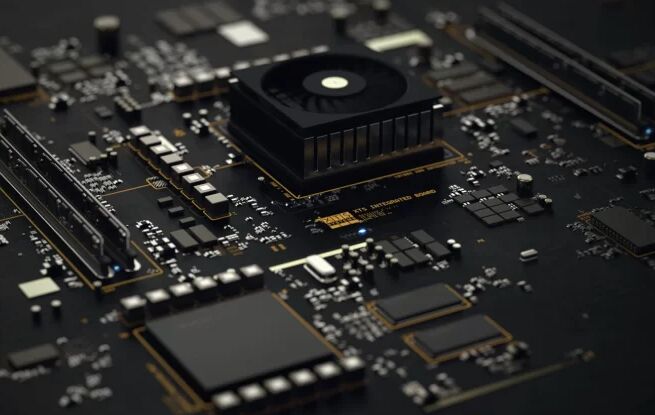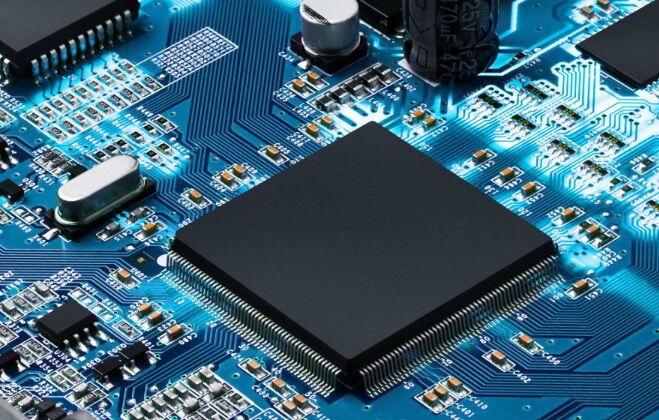By Cypress Semiconductor 103
Ⅰ. What is an integrated circuit?
An integrated circuit is a tiny electronic device or component. Using a certain process, the transistors, resistors, capacitors, inductors and other components required in a circuit are interconnected, and they are fabricated on a small or several small semiconductor wafers or dielectric substrates, and then packaged in a tube. , into microstructures with desired circuit functions. An integrated circuit is a circuit with specific functions that integrates a certain number of commonly used electronic components, such as resistors, capacitors, transistors, etc., and the connections between these components, through semiconductor processes. The development of integrated circuits has promoted the rapid development of electronic technology, making equipment more miniaturized, efficient and powerful. It is the cornerstone of modern electronic technology and is widely used in computer, communication, consumer electronics, medical equipment, automotive electronics and other fields.RF Integrated Circuits

Ⅱ. What is a chip?
Chip is a general term for semiconductor component products. A chip is a tiny electronic component, usually fabricated on semiconductor material. It is a core component of modern electronic equipment and functions as an integrated circuit. A chip is a very miniaturized electronic component that can contain billions or even more electronic components such as transistors, capacitors, and resistors, which are connected together through metal wires and interconnection structures to form complex circuit functions. Integrated circuits manufactured on the surface of semiconductor chips are also called thin-film integrated circuits. Another kind of thick-film hybrid integrated circuit is a miniaturized circuit composed of independent semiconductor devices and passive components integrated into a substrate or circuit board.Chipsets
The manufacturing process of the chip involves advanced semiconductor process technology, including steps such as photolithography, etching, deposition, diffusion and metallization. These steps allow the electronic components inside the chip to be precisely manufactured and assembled. Due to its small size, low power consumption, and high integration, the chip has become an important part of various electronic products such as computers, mobile phones, tablet computers, smart phones, TVs, and automotive electronics.
Ⅲ. Is a chip the same as an integrated circuit?
1. A chip refers to a miniature electronic component fabricated on a micro-sized silicon wafer or other semiconductor material. Chips can be integrated circuits or other types of tiny electronic components such as sensor chips, processor chips, memory chips, etc.
2. An integrated circuit is a specific type of chip. An integrated circuit is an electronic component that integrates a large number of electronic components (such as transistors, capacitors, resistors, etc.) on a single chip. It is formed by fabricating and connecting electronic components on semiconductor materials.
So an integrated circuit is a specific type of chip, and a chip is much broader and includes integrated circuits as well as other types of tiny electronic components. Integrated circuits are usually the most common type of modern chips, and they are widely used in various electronic devices due to their high integration, low power consumption, and small size.Systems on a Chip - SoC
Ⅳ. The difference between integrated circuit and chip
1. The difference in definition:
Chip: A chip is a general term that can be used to describe a variety of different types of tiny electronic components. It can refer to integrated circuits, but also to other types of tiny electronic components such as sensor chips, memory chips, etc.
Integrated circuit: An integrated circuit is an electronic component that integrates a large number of electronic components (such as transistors, capacitors, resistors, etc.) on a single chip. It is formed by fabricating and connecting electronic components on semiconductor materials.Metering Systems on a Chip - SoC
2. The difference in scope:
Chip: A chip has a wider scope, and it can include various types of tiny electronic components, such as integrated circuits, sensor chips, processor chips, memory chips, etc.
Integrated circuit: An integrated circuit is a specific type of chip that integrates multiple electronic components and interconnects them through metal wiring to form specific circuit functions.
3. Conceptual difference:
Chip: The concept of a chip is broader and can refer to various types of tiny electronic components, whether integrated circuits or other types of chips.LED Lighting Systems on a Chip - SoC
Integrated Circuit: The concept of an integrated circuit is more specific and narrow, referring to a specific type of electronic component formed by integrating electronic components on a chip.
4. Functional difference:
Chip: The functionality of a chip can vary depending on its type. For example, sensor chips are used to sense and measure physical quantities, processor chips are used to perform calculation and control tasks, memory chips are used for data storage and retrieval, etc.
Integrated circuit: The main function of integrated circuits is to realize specific circuit functions, such as logic operations, signal amplification, filtering, etc. It combines multiple electronic components and connects them through metal wires to form complex circuits.
Ⅴ. Can integrated circuits replace chips?
In general, integrated circuits and chips are different expressions of the same concept, so integrated circuits cannot replace chips, and integrated circuits are a type of chip.
An integrated circuit refers to an electronic component that integrates a large number of electronic components (such as transistors, capacitors, resistors, etc.) on a chip. It is formed by fabricating and connecting electronic components on semiconductor materials. Integrated circuits are characterized by a high degree of integration and complex circuit functions.
Chip is a general term that can be used to describe a variety of different types of tiny electronic components. In addition to integrated circuits, chips can also refer to other types of tiny electronic components, such as sensor chips, processor chips, memory chips, etc. Chips are characterized by their tiny size and highly integrated electronic components.
Therefore, an integrated circuit is a specific type of chip, not a substitute relationship. An integrated circuit is a form of chip that realizes complex circuit functions by integrating a large number of electronic components on a chip. Other types of chips may have different structures and functions, but they are all one type of chip.

Frequently Asked Questions
1. What are the fault diagnosis and testing methods of integrated circuits?
Physical Troubleshooting:
Heat Sensitivity Test: By monitoring and controlling the temperature of integrated circuits, thermally sensitive fault locations are identified.
Failure analysis: Use scanning electron microscope, electron beam tester and other equipment to observe and analyze the physical structure of integrated circuits, and identify the cause and location of failure.
Functional troubleshooting:
Fault Injection: Diagnose faults by injecting faulty or disturbing signals into an integrated circuit and observing the response and behavior of the circuit.
Functional testing: Functional testing of the inputs and outputs of an integrated circuit to verify that it works as expected. In the event of a failure, the location of the failure can be determined by comparing with the expected result.
Logical fault diagnosis:
Built-in self-test: The integrated circuit integrates a self-test circuit, which can test itself and detect faults.
Logic Analyzer: Use a logic analyzer to capture and analyze the logic signals of an integrated circuit to identify faulty logic paths and states.
2. Which fields or industries widely use chip technology?
Optoelectronics and optical communication: including optical fiber communication equipment, optical fiber sensors, lasers, optical storage, etc.
Consumer electronics: such as smartphones, tablets, televisions, audio equipment, digital cameras, game consoles, etc.
Information technology and communication: including computer, network equipment, mobile communication, wireless communication, satellite communication, etc.
Medical and biotechnology: such as medical equipment, health monitoring equipment, pharmaceutical research and development, biochips, etc.
3. What is the main function of the chip?
Analog function: Some chips integrate analog circuits for processing analog signals, such as sound, image, sensor output, etc.
Logic function: The chip can perform logic operations, including data processing, arithmetic operations, decision-making and control, etc. Logic functions are the main application of digital circuits in chips.
Encryption and security functions: The chip can provide encryption algorithms and security functions to ensure data confidentiality, integrity and identity authentication.
Sensor interface function: The chip can interface and interact with various sensors to collect environmental information, measure physical quantities, or detect events.